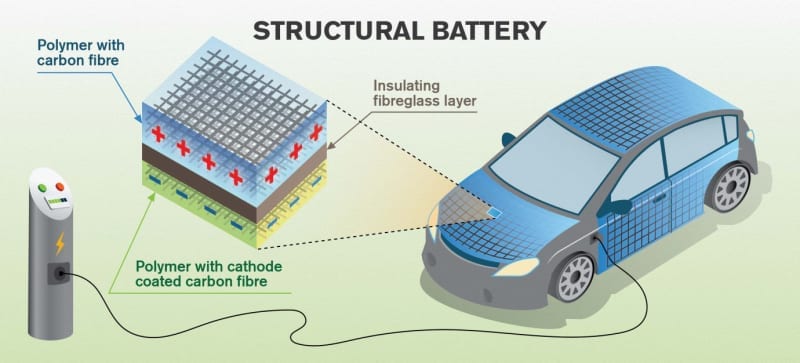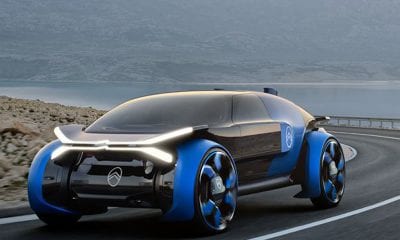
News
Research Shows Potential for Energy Storage in Actual Body of Electric Vehicles
Researchers are tirelessly working to modify batteries in order to make electric vehicles more efficient. Structural batteries have been under consideration for electric vehicles for some years. Structural batteries are energy storage devices which form part of the overall structure of the vehicle: be it the chassis of an electric car, or part of the fuselage or skin or the underlying supporting framework of an aircraft.
Researchers from Chalmers University of Technology in Sweden have found a new way of transforming composite panels into batteries. Led by Leif Asp, a professor of material and computational mechanics, the team has been researching how carbon fibres in composites could be used as components of lithium ion batteries formed out of the panelwork itself.
In an open-access paper published in the journal Multifunctional Materials, the team reports that carbon fibres with improved multifunctional performance can be realized by tailoring the graphitic order and crystallite sites of the carbon fibre.
The trick is to optimize the size and orientation of the fibres so there’s a good balance between stiffness and the electrochemical traits needed to store energy. While the carbon fibre with battery-friendly characteristics is slightly stronger than steel scientists believe companies might need thicker layers to make up for the difference, Leif Asp says.
“It will also be possible to use the carbon fibre for other purposes such as harvesting kinetic energy, for sensors or for conductors of both energy and data. If all these functions were part of a car or aircraft body, this could reduce the weight by up to 50 per cent,” Asp claimed.
Chalmers team’s research focuses around determining the optimum structure for carbon fibres based on the polymer polyacrylonitride (PAN) to both store energy by intercalating lithium and act as reinforcement for a polymer composite. PAN-based fibres have much higher electrochemical capacity than fibre is based on pitch, they found.
In general, “good” battery fibres are slightly stiffer than steel, while “poor” battery fibres are 10 times stiffer. ” A slight reduction in stiffness is not a problem for many applications such as cars. The market is currently dominated by expensive carbon fibre composites whose stiffness is tailored to aircraft use. There is therefore some potential here for carbon fibre manufacturers to extend their utilisation,” Asp said.
If aircraft manufacturers want to use this property of carbon, they may have to increase the thickness of the carbon fibres in their composites to compensate for the reduction in stiffness, which would also improve the energy storage capability.
“Structural batteries may perhaps not become as efficient as traditional batteries, but since they have a structural load-bearing capability, very large gains can be made at system level,” says Asp.
The research was funded by Vinnova, the Swedish Energy Agency, the Swedish Research Council and Alistore European Research Institute.

























